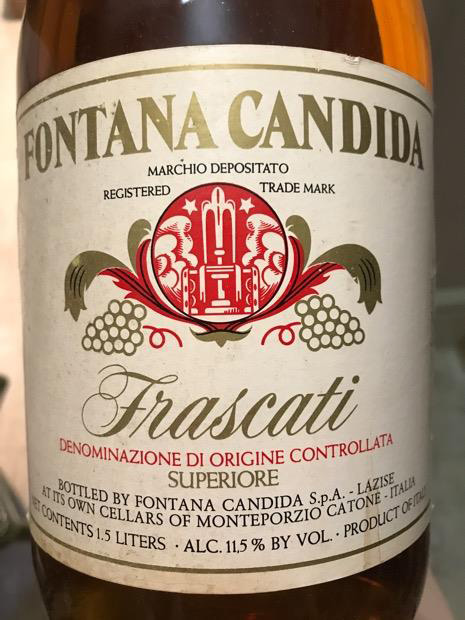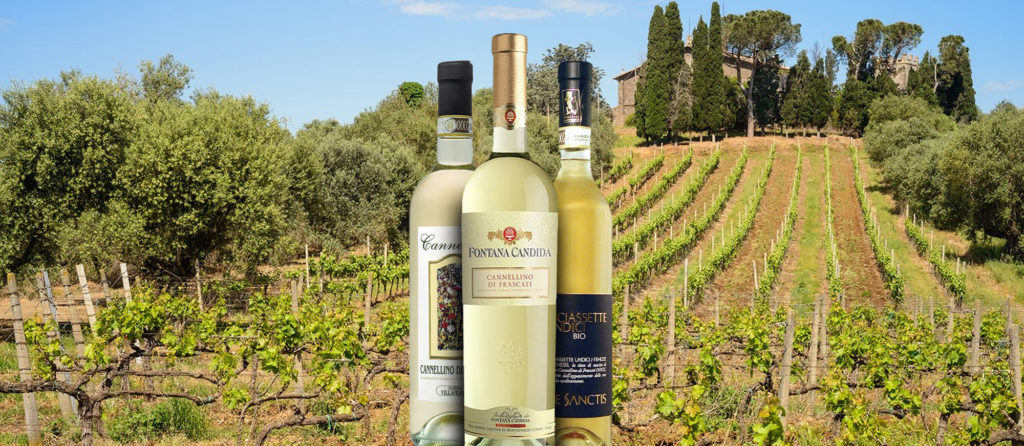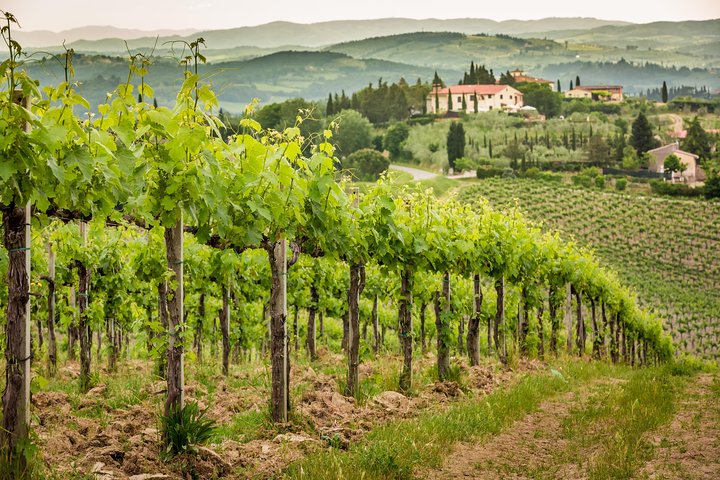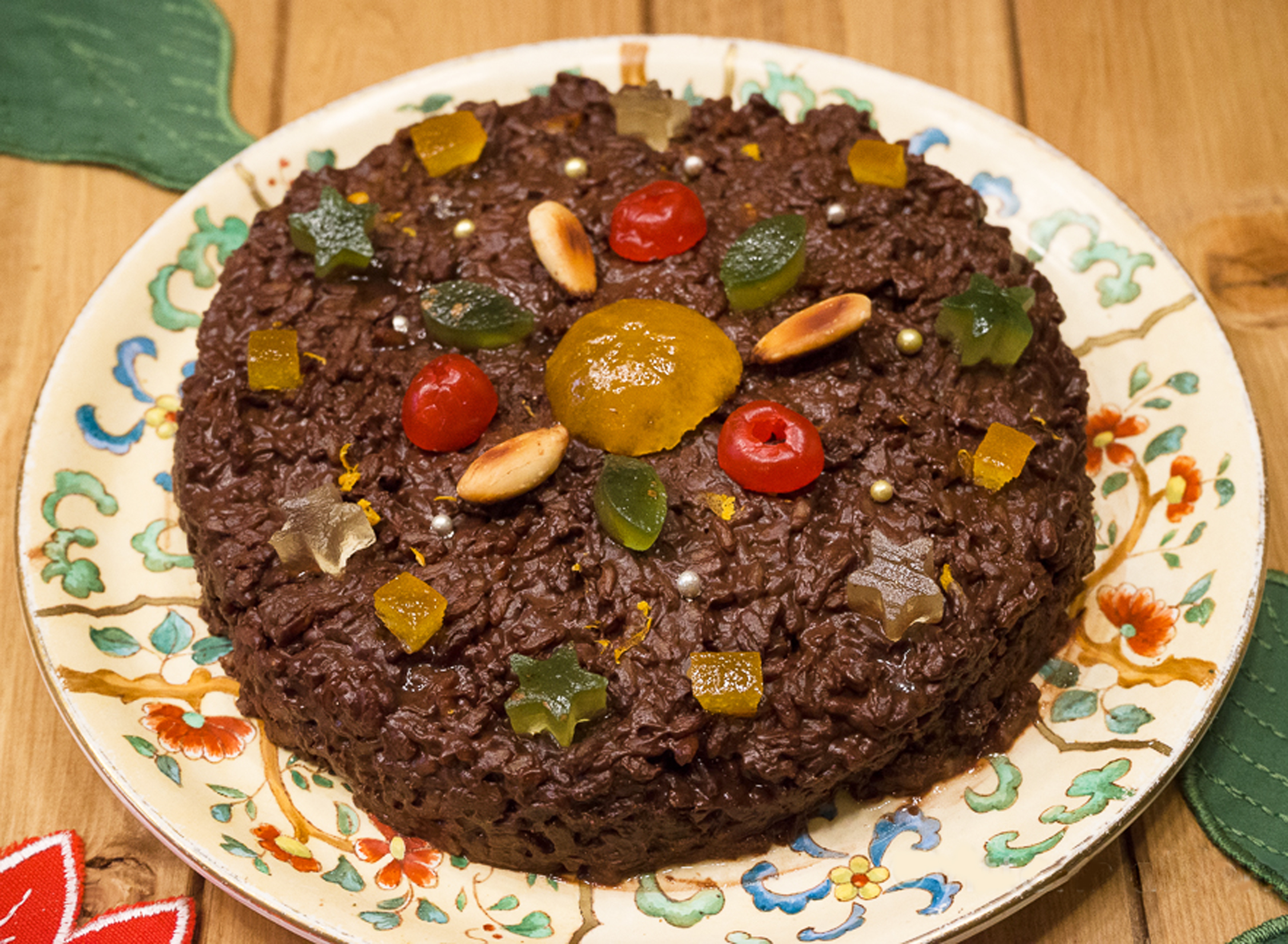Frascati…Scenic and Serene
Scenic and serene Frascati is located in the province of Rome in the Lazio region of central Italy and is well-known for its wines. Frascati is also closely associated with science, being the location of several international scientific laboratories and is also renowned for its historic sites. The most important archeological finding in the area, dating back to Ancient Roman times, is a Patrician Roman villa that is believed to have belonged to Lucullus. In the first century AD, its owner was Gaius Sallustius Crispus Passienus, who married Agrippina the Younger, mother of Nero. His properties were later confiscated by the Flavian Imperial Dynasty (69 – 96 AD). Consul Flavius Clemens lived in the villa with his wife Domitilla during the rule of Domitian. According to the Liber Pontificalis, in the 9th century, Frascati was a little village. The name comes from a typical local tradition of collecting firewood (frasche) – many places around the town refer to trees or wood. The civic archaeological museum at the Scuderie Aldobrandini exhibits archaeological finds from the ancient city of Tusculum and the nearby area. It has scale models of the Tuscolane Villas.
Frascati is famous for two things, its wine and its villas. The villas which were built from the 16th century onwards by Popes, Cardinals and Roman nobles were status symbols of the Roman aristocracy.
Frascati wine was referred to by the Romans as the ‘Golden Wine’ both for its color and its value. It has become embedded in the cultural and economic traditions of the city and it has been said that Frascati is the most often mentioned wine in Italian literature. Pope Gregory XVI, in the first part of the 18th century, said it was his favorite wine. Most of the grapes grown for wine in Lazio are white varietals.
The wines made in close proximity to Rome are collectively known as Castelli Romani, nine communes that produce wine in the Alban Hills, which are just south of Rome. The vineyards range from 200 to 1,000 feet in altitude. The soils are well drained and volcanic. The Mediterranean provides some influence but the climate is more affected by the hills. Of these, Frascati is the most famous. It has historically had a widespread reputation as an inexpensive white wine served in the cafés of Rome.
Frascati, under DOC laws, is made in either a dry or a sweet style. The dry table wines are the most popular. They are labeled as Novello, Superiore or Novello Superiore. The wines are made from at least 50% Malvasia Biance di Candia grapes. The balance of the grapes can be from several varieties. The Malvasia gives the wine a citrus aspect. There is quite a diversity in the final styles of the wines. Some wines are subtle and flowery, while others have lots of fruit and acidity.
With such broad guidelines, there is no “typical” style of Frascati. It is hard to establish criteria for defining a good Frascati when there are so many styles. One thing is certain, these wines make for great sipping on a hot summer evening. They generally have low alcohol levels, around 11-13%, which makes them perfect to pair with lighter pasta dishes. When purchasing a bottle, try to find the youngest bottle of Frascati you can. These are really not wines that are made to age.
The restaurant that we selected for our lunch in Frascati was Tenuta di Pietra Porzia. The restaurant is part of an estate that extends over an area of 118 acres, with vineyards and olive groves. Over 100 acres are vineyards with the grapes grown for the production of wines, while the remainder of the estate has olive groves (producing extra virgin oil) and vegetable gardens.
Many of the vegetables that we enjoyed were grown in the “kitchen’s garden.” The estate also has a small 12-room bed and breakfast – the Pietra Porzia.
The restaurant offers breathtaking views from its terrace, overlooking lush gardens and olive groves. The restaurant offers local dishes that are reinvented in a modern way. One of the remarkable aspects of this restaurant is how self-sufficient they are offering homemade pasta, vegetables and herbs from its kitchen garden, seasonal fruits, fresh grapes, olives and of course, the estate wines.
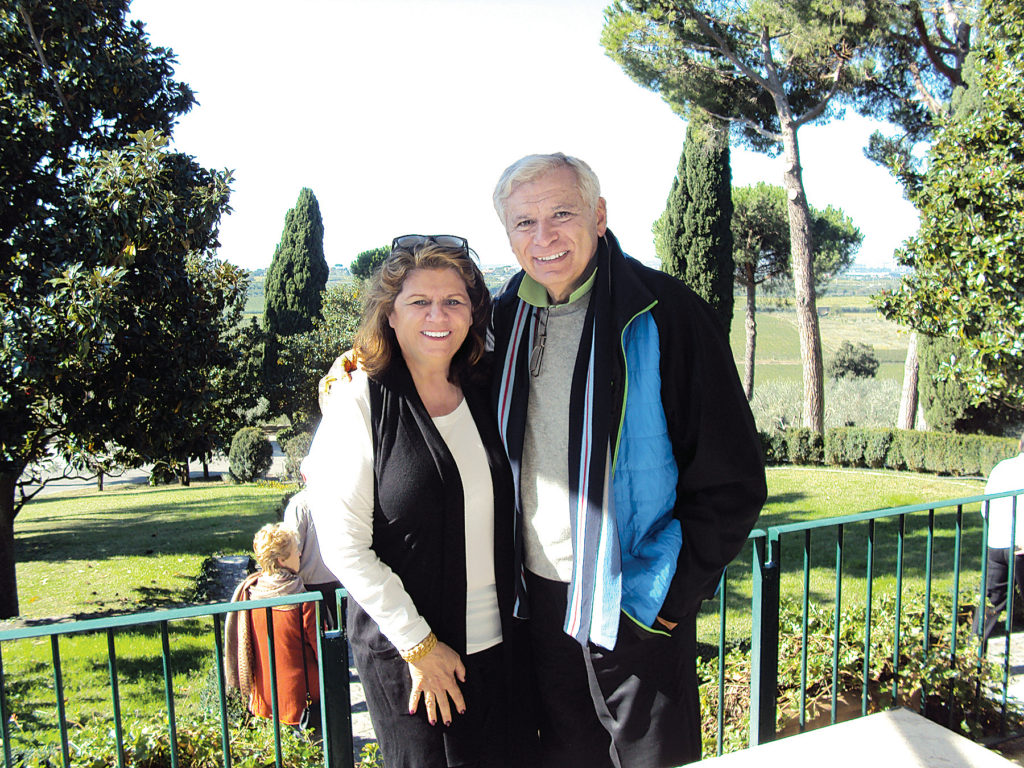
Bucatini all’Amatriciana
Ingredients
- ¼ cup extra-virgin olive oil
- 12 ounces cubed pancetta
- 1 onion, cut lengthwise in half and then into ¼ inch-thick half-moons
- 4 cloves garlic, sliced (optional)
- 1 ½ teaspoons hot red pepper flakes
- 4 cups Basic Tomato Sauce
- 1 pound Bucatini
- Freshly grated Parmigiano
- Salt & Pepper to taste
Preparation
Bring 6 quarts of water to a boil in a large pot, and add 2 tablespoons salt.
In a 10 to 12-inch sauté pan, combine the olive oil, pancetta, onion, garlic and red pepper flakes; set over low heat and cook until the onion is softened and the pancetta has rendered much of its fat; about 12 minutes.
Dolce di Pasqua
Drain some of the fat out of the pan. Add the tomato sauce, turn up the heat and bring to a boil, then lower the heat to a simmer and allow to bubble for 6 to 7 minutes.
While the sauce simmers, cook the bucatini in the boiling water for about a minute less than the package directions, until firm; drain.
Add the pasta to the simmering sauce and toss for about 1 minute to coat. Top with freshly grated Parmigiano. Serves 3
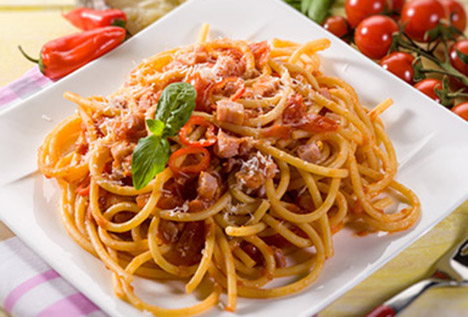
FRASCATI
Frascati is one of the classic towns that comes to mind when one thinks of Rome – and wine. It is a white wine that many associate with open-air dining in the Eternal City, where you will find it served in pitchers on the sidewalk cafes. Frascati goes very well with classic pasta dishes like bucatini all’Amatriciana. The wines of Frascati are well known worldwide. If you haven’t yet tried these wines, you are in for a treat.
Here is the one to consider. Fontana Candida Frascati is the most popular wine from the area. It is a light dry wine with citrus notes and a crisp finish. The grapes for this wine are grown in the porous, volcanic soils located in the Frascati commune near Rome. Rich in potassium, this soil produces plump flavorful grapes. Fontana Candida preserves the wine’s flavor and clarity using cold filtration. It pairs well with pasta, veal, light seafood dishes and mild cheeses.
